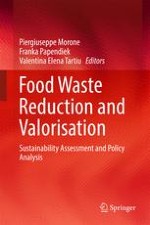2017 | OriginalPaper | Chapter
3. The Economic Case for the Circular Economy: From Food Waste to Resource
Authors : Corrado Topi, Magdalena Bilinska
Published in: Food Waste Reduction and Valorisation
Publisher: Springer International Publishing
Activate our intelligent search to find suitable subject content or patents.
Select sections of text to find matching patents with Artificial Intelligence. powered by
Select sections of text to find additional relevant content using AI-assisted search. powered by
